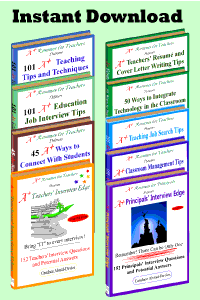English Language Learners (ELL) are a growing student population. As they take up a larger and larger percentage of classroom students, educators need to become skilled in accommodating and reaching these students.
However, unlike ESL teachers who have intensive training on reaching these students, classroom teachers receive very little training concerning how to accommodate these new English speakers within their classrooms properly. This can create a difficult situation for both the teacher and the ESL student.
It can be challenging to address the needs of English Language Learners (ELL) students within the same classroom, as they can each differ in their first language and the degree of their English language skills.
When you teach a lesson, you don’t know how much your ESL students can retain. Therefore, the key to meeting the needs of English Language Learners is to plan lessons accessible to a wide range of students and utilize language-focused instruction.
The good news is that you can apply specific teaching methods and instructional strategies to meet your ESL students’ needs better.
Six Tips to Accommodate the Needs of English Language Learners
Vocabulary and Language Development
Teachers introduce new concepts by discussing vocabulary words key to that concept. Exploring specific academic terms like “algorithm” starts a sequence of lessons on larger math concepts and builds the student’s background knowledge.
When introducing new vocabulary or academic vocabulary, it’s essential to do so with visual aids to help ESL students understand what the new words mean.
To build your students’ vocabulary, provide them with opportunities for word learning through wide reading, exposure to the high-quality oral language, the promotion of word consciousness, explicit instruction of specific words, and modeling and instruction in independent word-learning strategies.
Guided Interaction
Teachers structure lessons to enable students to work together to understand what they read by listening, speaking, reading, and writing collaboratively about the text’s academic concepts. By working collaboratively, ELL students can work off other students to help them comprehend and learn what is being asked of them.
Explicit Instruction
Use clear instructions or direct teaching of concepts, academic language, and reading comprehension strategies to complete classroom tasks. Explicit instruction refers to task-specific, teacher-led instruction to demonstrate how to complete a task. Teach students both basic and higher-order reading skills using explicit instruction.
This will help ESL students understand what is being asked of them by providing them clear, specific, and easy-to-follow procedures as they learn a new skill or strategy and the language associated with it.
Real-World Examples & Context-Based Learning
Context-Based learning refers to using real-life and fictitious examples in teaching environments to learn through the actual, practical experience with a subject rather than just its mere theoretical parts.
This way of learning can immensely help ELLs by providing them with concrete examples to comprehend the learning content presented to them in English. Implementing students’ interests and real-life examples will help them gain interest in the subject matter.
Research shows that when students are interested in something and can connect it to their lives or cultural backgrounds, they are more highly motivated and learn better.
Graphic Organizers & Modeling
Visual learning is beneficial to all students, and especially ELL learners. It provides clues and visual cues to the language context to help English Language Learners grasp concepts, thereby making the content more accessible.
Visual aids used in the classroom are essential for English language learners. Visual aids provide a different explanation and give the students information they may not have understood if presented to them in written or spoken form.
If a student cannot read or understand spoken English, drawings, videos in their native language, graphs, etc., help the students immensely in learning the content presented. Implement various visual aids, such as graphic organizers, pictures, diagrams, and charts to optimize student learning.
Authentic Assessment
Teachers model and explicitly teach thinking skills (metacognition) crucial to learning new concepts. With authentic assessments, teachers use various activities to check students’ understanding, acknowledging that students learning a second language need a variety of ways to demonstrate their knowledge of concepts that are not wholly reliant on advanced communication skills.
Just because a student doesn’t have a firm grasp of the language doesn’t mean that they don’t grasp the learning concept. Allowing ESL students other outlets to show their knowledge can help them succeed in the classroom.
Examples of some authentic assessments include performance-based assessments, project-based assessments, criterion-referenced assessments, and methods that allow students to show and practice knowledge in non-language dependent ways such as Venn diagrams, charts, drawings, mind maps, and PowerPoint slides.
There are different accommodations available for your students.
However, all of these accommodations aren’t equal.
What works for one student may not work for another…
And what worked at one point in time may lose its effectiveness over time.
This is why it is so significant to evaluate your teaching and your students’ learning continually. Proper evaluations will help you know whether your accommodations and modifications are valid or not.
During this evaluation, it’s necessary to solicit and consider student feedback. If your student doesn’t feel like the modifications are helping, it’s time to try something new.
It’s also great to use your colleagues as the valuable resources they are. Tap into the knowledge of your school’s ESL teachers and discuss the subject with your fellow teachers. Most teachers will have accommodating ESL students and will have ideas and examples of accommodations that they’ve used successfully.
Keep in mind that your instructional accommodations’ ultimate goal is to make the learning process more comfortable for your ELL students.
Put forth the time and effort necessary to carefully select effective accommodations, and you will see how these small changes can make a world of difference!


